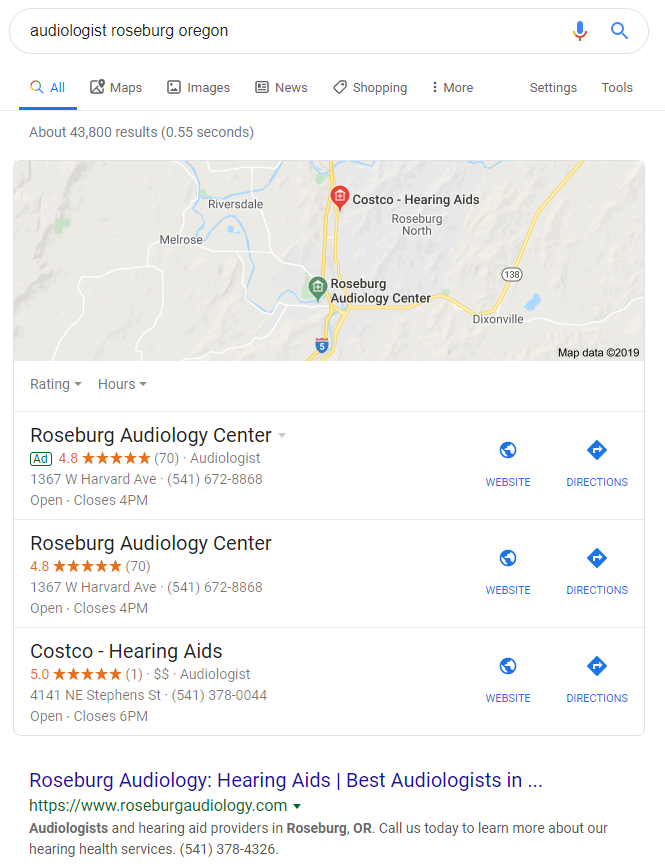
Are there still private-pay hearing care patients out there? With so many third-party payers in hearing care, it’s natural to wonder.
The good news? There are! But you need to tap into what attracts them, because private-pay patients aren’t tied to specific insurers.
They have a world of options, do their homework, bring serious buying power, and can access plenty of data — practice profiles, reviews, and more — with a click.
So how can you boost the flow of private payers through your doors? Here are four strategies.

Find Your Differentiator
Generally, all hearing care providers have access to the same technology, so how do you stand out in your market? Brand yourself as the expert in your area who generously shares crucial knowledge and is committed to delivering remarkable patient experiences.
Local Expertise
Become your market’s trusted hearing care advisor. If people in your community see you as a go-to resource for their questions and concerns, they’ll be confident in their hearing care decisions. They’ll see you as someone who can be trusted with their or a loved one’s hearing health and wellness — not just a place to buy hearing aids.
Remarkable Experiences
Practices tend to invest most of their efforts in attracting new patients. But nurturing strong patient-provider relationships to retain your current private payers is much more cost-effective. Provide a premier experience at every touch point to help create patients for life — and ready sources of referrals.
Remarkable, not Mediocre
Your competitors most likely focus on technology and price. Hearing needs, though, are unique and diverse, like the people you serve.
Keep your patients in the driver’s seat throughout the process, building an emotional tie-in with them and educating them in patient-friendly language about how hearing works. They want someone who understands what it’s like to live with hearing loss and who inspires confidence in their recommended personalized treatment.
Focusing on your patients highlights your remarkability and your competitors’ mediocrity.

Boost Your Visibility

Private-pay patients typically initiate their provider search online, so it’s critical that your website appears at the top of Google search results. Help make it happen with:
Search Engine Optimization (SEO)
When you use a search engine, you get two types of results: organic and paid. Organic search results are generated depending on how well a site conforms to what Google requires. This is based on myriad factors that affect user experience, such as keyword usage, content originality, spelling, mobile friendliness, site speed, links, and more.
SEO improves the chances that your site will be seen by Google and displayed near the top of the first page of search results. Online directories are another key to attracting targeted traffic to your website and ultimately to your practice. A well-rounded SEO program should include a listing service in its offerings.
Paid search results allow you to target specific keywords your patients are searching for online. You can also target your local geographic area, ensuring you’re attracting more qualified patients within your own practice boundary.
Another benefit: Paid search levels the playing field, helping you more easily compete with the major players in the hearing-care space and advertise alongside big-box stores and manufacturers.
Publishing topical and informative blog articles on a regular basis is important for differentiating and branding your practice. It easily and effectively communicates your expertise to the community, helping you stand out as a reliable resource.
It also supports your search-engine rankings, with Google potentially viewing your constantly updated content as more current and relevant than that of other websites.
One of the best sources for potential topics? Your own patients, whose questions are timely, topical indicators of what folks want to know.

Grow and Manage Your Online Reviews

When patients find you online, do they like what they see? First impressions matter — especially when it comes to patients’ health and wellness — and that includes your online reviews.
Having too few reviews, below-average or poor ratings, or negative comments can send prospects running to a competitor. Some simple steps, though, can help turn that around.
First, focus on improving your online-review program. Online reviews are one of the most efficient ways to attract new patients, because satisfied patients do your marketing for you.
An easy way to start building more feedback is to simply ask your patients to review your services online. A stronger approach is to consider using an online-review service to help.
It’s also important to monitor your reviews as they come in, to uncover any common complaints that can be addressed. It will also help you respond to any negative reviews in a positive and helpful manner. This will show that you care about the service you provide and are willing to correct any unpleasant experiences.
And remember: Don’t focus just on the negative reviews you might receive; it’s equally important to respond to positive reviews, demonstrating that your practice is responsive, is gracious, and cares about its patients.

Connect With Your Community
Community engagement plays a big role in attracting new and current patients, so consider these tried-and-true approaches for your marketing mix:
Social Media
Facebook and other social-media platforms make it a cinch to educate your followers. Easy options include highlighting your recent blog posts, linking to medical studies that relate to hearing health, and communicating new technology offerings.
Share news, events, and other interests unrelated to hearing health, too. Offering relevant and entertaining information outside of hearing-care topics helps attract patients beyond your social circle. When followers share or like your posts, their social circle is also exposed to your practice, further expanding your audience.
Consider assigning a social-media captain in your practice to stay responsive to followers’ comments and questions.
Live Events
Engaging the community needn’t be limited to digital tactics. You can also connect with your market and position yourself as the go-to educational resource by holding seminars, hosting booths at popular city-sponsored events, or partnering with complementary organizations and businesses that align with your goals.
Business Contacts
Most areas have local business associations, service clubs, charitable organizations, and other opportunities to build and leverage professional contacts while also giving back to the community. You can also reach out to primary care physicians in your area.
Media Exposure
Newspaper, TV, and radio can also help brand you as the expert in your market. Advertising in these media can be expensive, but aiming for free exposure is well worth the time.
Provide educational and relevant news releases to local media on a regular basis, which boosts the chance that one of your releases will expose your expertise and practice to a much wider section of the community.
Regardless of your marketing methods, remember:
- It’s important to regularly review them. As markets change and shift, some previously successful approaches may need revisiting. Other strategies and tactics may be performing better than they were before.
- There’s no silver bullet to attracting private-pay patients. It takes a balanced mix of targeted tactics that, working in concert with each other, generate the essential patient flow needed to meet the growth goals of your practice.
Which of the tactics discussed here are you currently doing? Identify the ones you’d like to further focus on and improve. Add in another tactic that you’re not currently performing but want to consider, and start working on it. With a targeted plan, you can bring more private-pay patients through your doors.